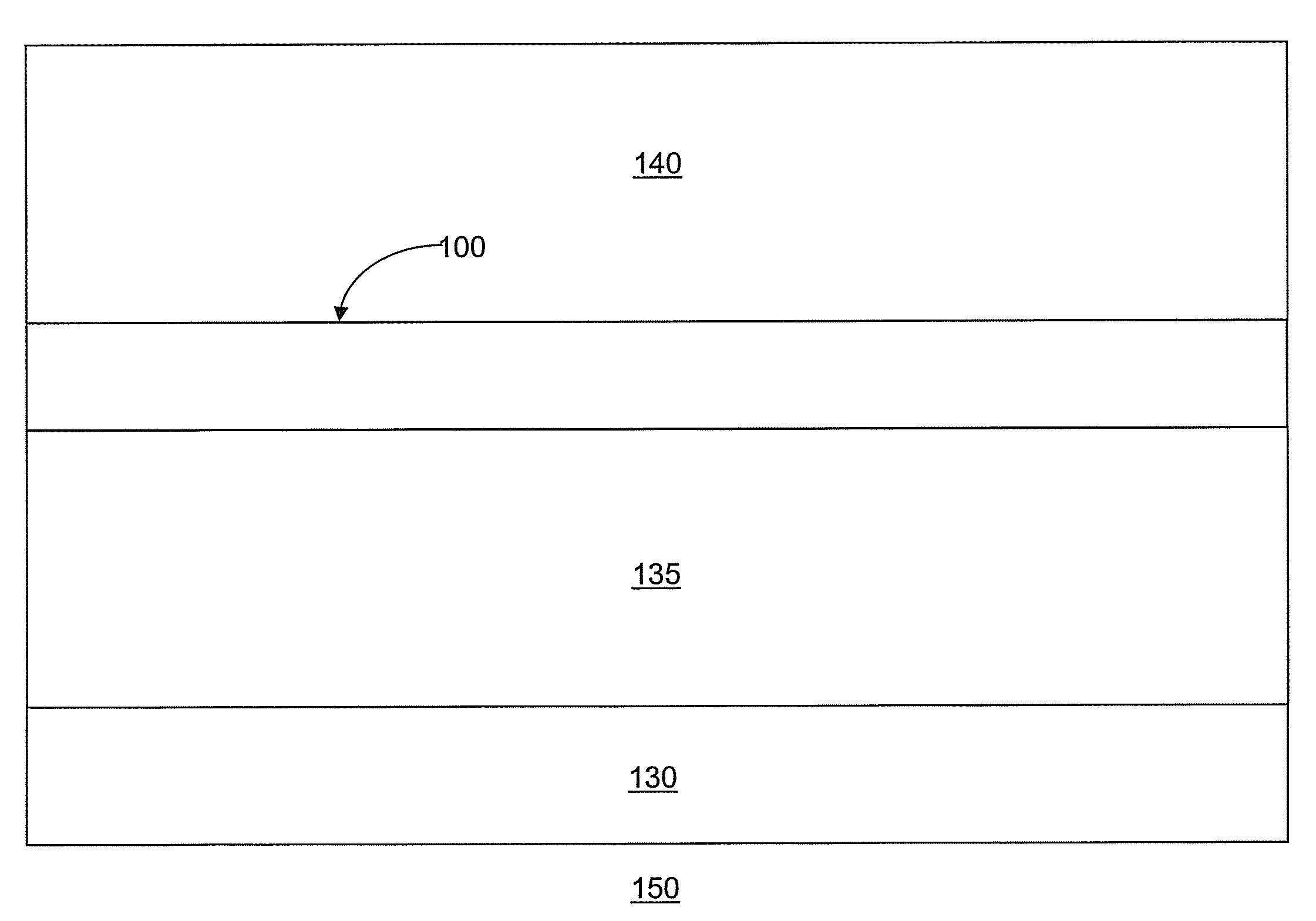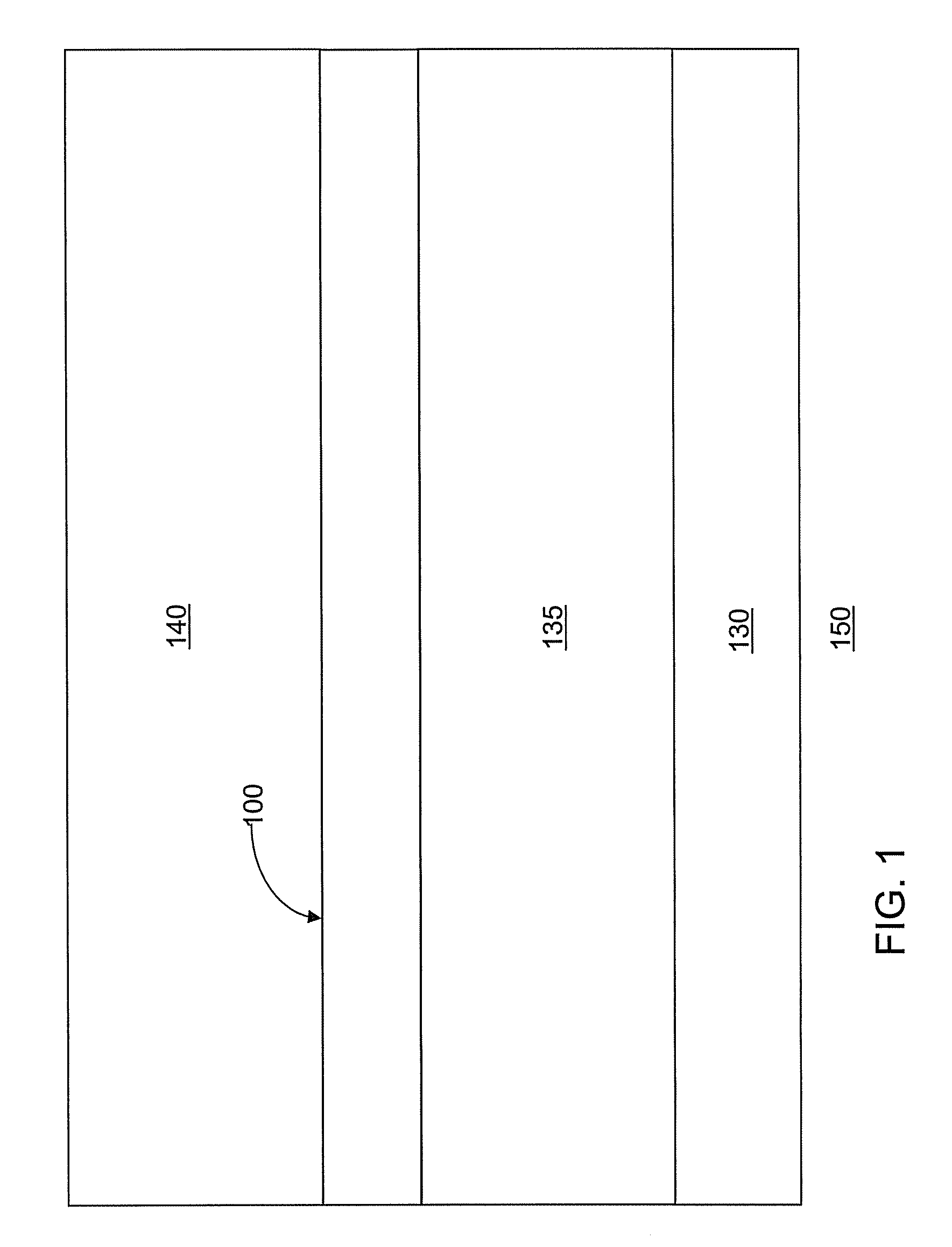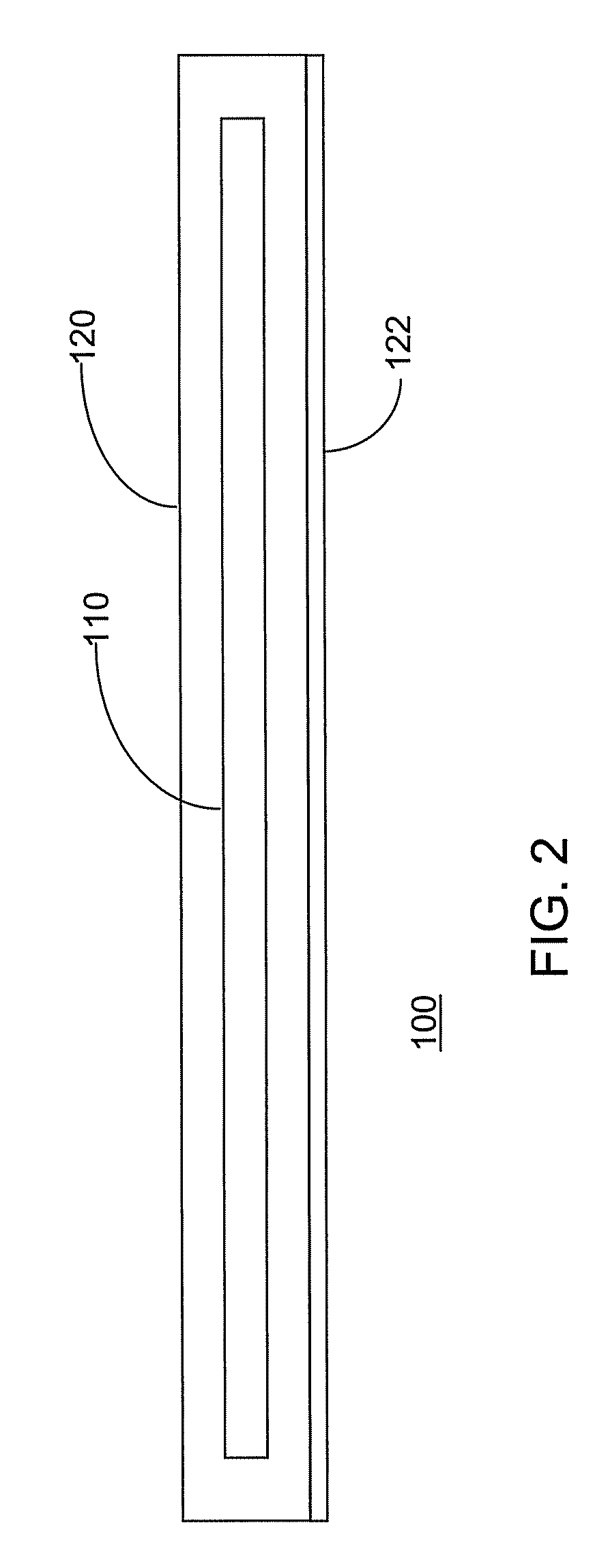Reinforcement for asphaltic paving, method of paving, and process for making a grid with the coating for asphaltic paving
a technology of reinforcement materials and asphaltic paving, applied in single-unit paving, roads, weaving, etc., can solve the problems of inefficient tacking or unacceptable delay, several difficulties of tack coats, needless delays, etc., and achieve the effect of improving the interlaminar bond
- Summary
- Abstract
- Description
- Claims
- Application Information
AI Technical Summary
Benefits of technology
Problems solved by technology
Method used
Image
Examples
example 1
[0093]The coating 22 described in Table 1, below, was prepared and applied to an uncoated GlasGrid® product (8501 or 8511 grid) from Saint Gobain Technical Fabrics:
[0094]The preferred resin systems useful for the coatings 120 and 22 include those that are liquid, or can be liquified, for impregnating some or all of the spaces between the filaments 20. The resin system should be activated at paving temperature, pressure, or both, to form a bond compatible with asphaltic paving. Such systems may include thermosetting resins, such as B-stage epoxy, silicone, or phenolic; or thermoplastics, such as nylon, polyethylene, polypropylene, polyurethane or polyvinyl chloride. Plastisols including resin and solvent mixtures or neat resin, with or without additives, are useful alternatives. Preferred ingredients and ranges for a desirable polyvinyl-chloride latex emulsion system are provided in Table 1, below:
TABLE 1Preferred PVC Coating RangesBroadNarrowGenericCommercialrangerangeDescriptionNam...
example 2
Polymer Resin Coated Film Preparation
[0099]A thin polyethylene (PE) and polypropylene (PP) blended film of 12.7 micrometers in thickness was prepared. The film was perforated with openings of 0.5 millimeter diameter every 25.4 millimeters at interval to ease heat transfer from the hot mix asphalt mixtures of the surface layer application to the lower asphalt layer, and to let the film adhere to the asphalt pavement layers. The film was dipped into a bulk polymerized (vinyl chloride) PVC acrylic copolymer in emulsion at 21° C. and the coated film was dried for 2 minutes in the convection oven at 100° C. until a residual rate of 123 gram per meter2 of coating on the film was achieved.
[0100]The film is preferably a synthetic material to carry the polymeric resin with strong adhesion to the asphaltic system. Illustrative of, but not limiting, the thin films which can be used are the following:
[0101]Polyethylene
[0102]Polypropylene
[0103]Polyethylene and polypropylene copolymer
[0104]Polyes...
example 3
[0112]FIG. 11 is a plot of data from a series of trials conducted on compositions for use in the coating 120 and / or coating 22. The data were used to determine what percentage of asphaltic emulsion could be blended with the non-asphaltic resinous material used in the coating 120 without substantially degrading the shear performance relative to the shear performance of a non-resinous coating.
[0113]Asphalt emulsion was blended with the polymer resin described in Table 1, with the relative amounts based upon percentage of dry weight. The blended resin was prepared using 6 different resin / asphalt ratios; polymer vs. asphalt (100% resin, 75:25, 50:50, 25:75, 10:90, 0:100).
[0114]A non-coated e-glass grid fabric, called “greige”, was manually dipped into the resin or resin / asphalt mixture and thoroughly impregnated and dried out. The manually coated fabric was placed in between a pair of asphalt pucks (four-inch diameter cylindrical shaped samples). Each puck was constructed with asphalt m...
PUM
| Property | Measurement | Unit |
|---|---|---|
| Temperature | aaaaa | aaaaa |
| Temperature | aaaaa | aaaaa |
| Temperature | aaaaa | aaaaa |
Abstract
Description
Claims
Application Information
 Login to View More
Login to View More - R&D
- Intellectual Property
- Life Sciences
- Materials
- Tech Scout
- Unparalleled Data Quality
- Higher Quality Content
- 60% Fewer Hallucinations
Browse by: Latest US Patents, China's latest patents, Technical Efficacy Thesaurus, Application Domain, Technology Topic, Popular Technical Reports.
© 2025 PatSnap. All rights reserved.Legal|Privacy policy|Modern Slavery Act Transparency Statement|Sitemap|About US| Contact US: help@patsnap.com



